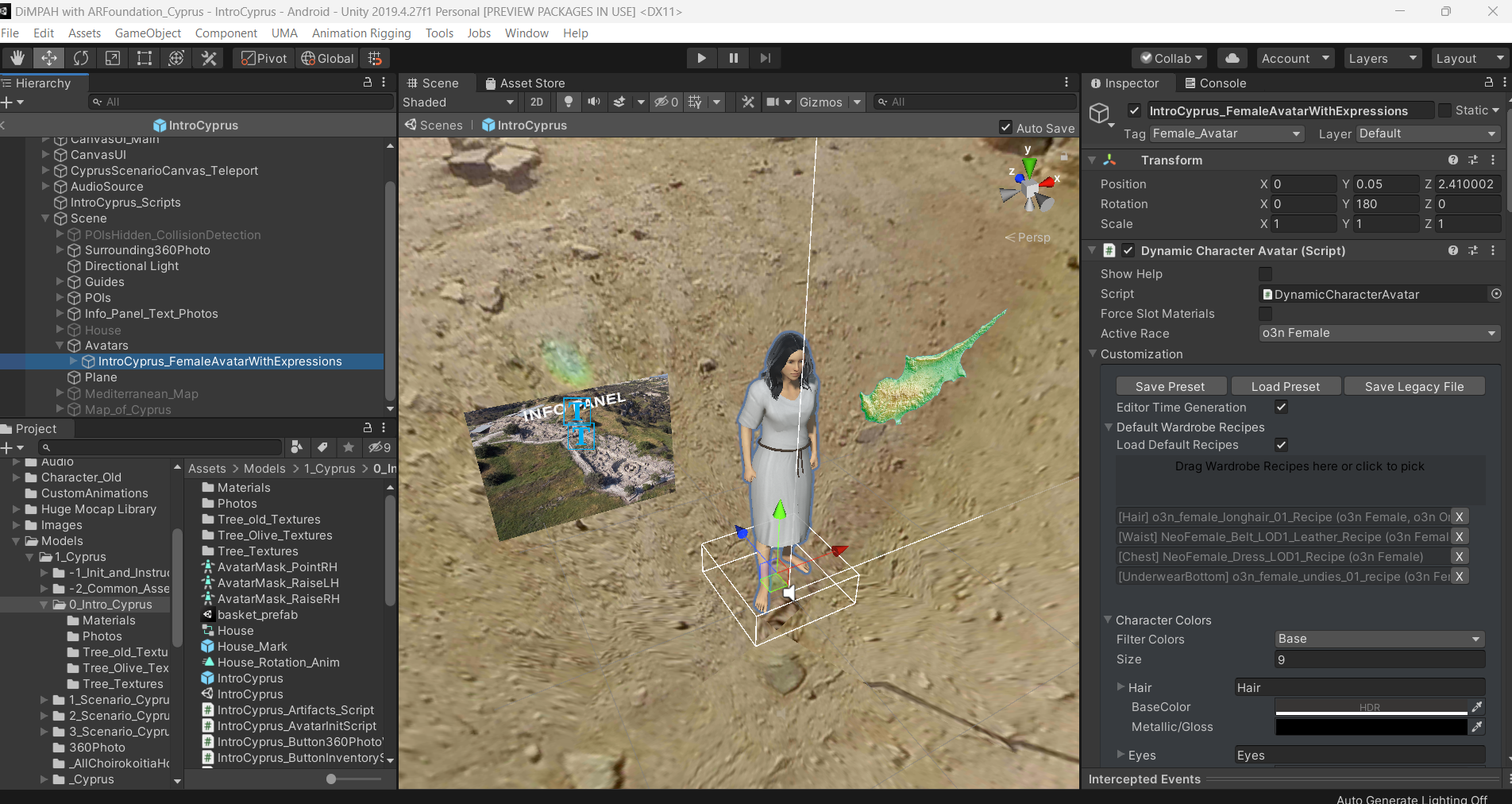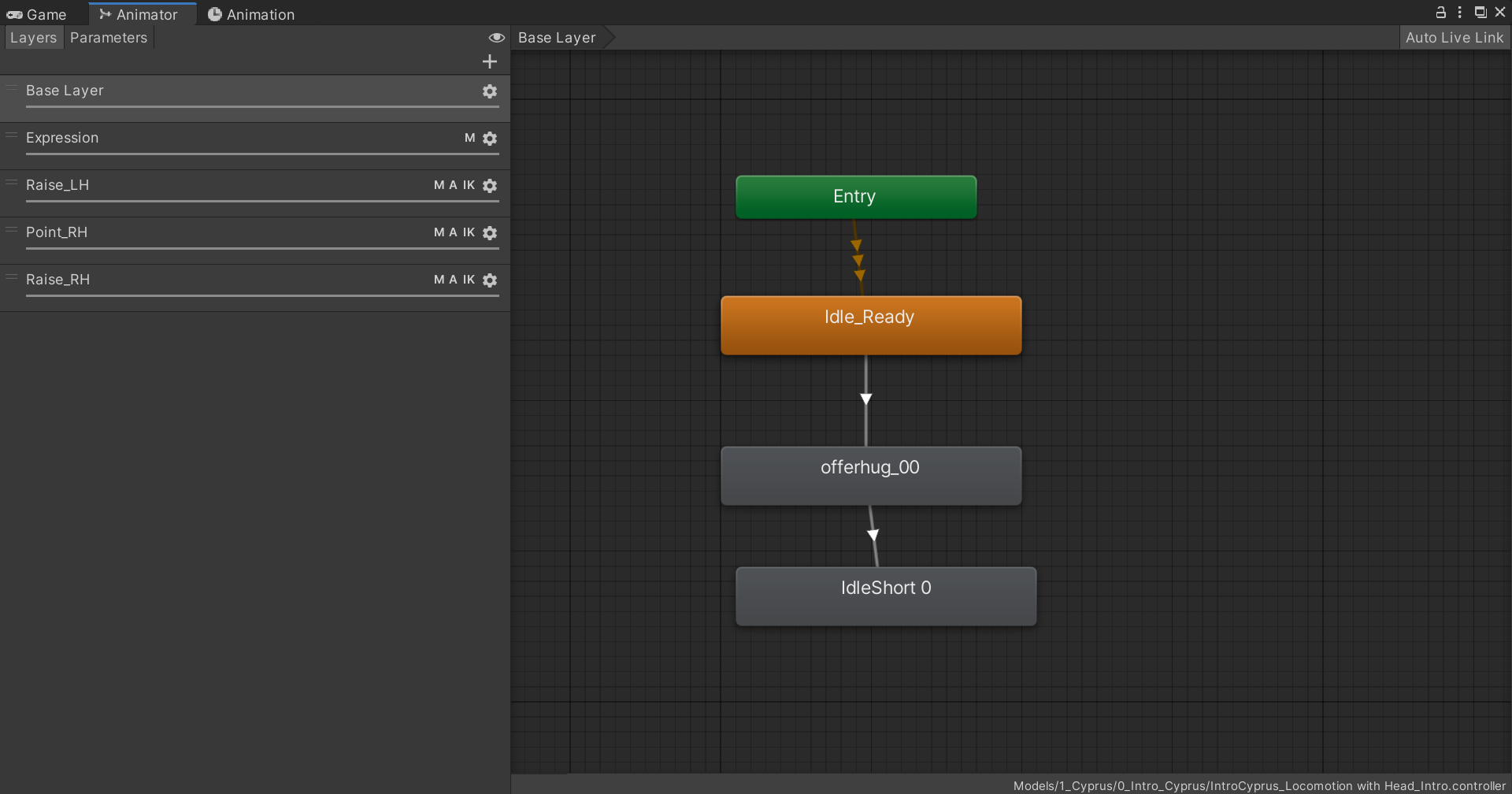2.4 Augmented Reality Mobile Applications Development
2.4.1.2 Intro Scene
Unity Multipurpose Avatar (UMA) system
The Unity Multipurpose Avatar (UMA) system is a character creation and animation platform for Unity. The UMA system allows developers to create custom characters with various features, such as different body types, skin tones, and facial features. These characters can be animated using the UMA system, which includes a range of motion capture data and animation tools. The UMA system is designed to be user-friendly and to allow developers to quickly and easily create and customize characters for their games or other projects. For detailed video tutorial examples, please follow the link here.

Figure 1 - UMA
Animator:
The Unity's animator allows the deployment of animation clips stored in the project to create objects or characters animations by dragging the clips in the workspace, as shown in Figure 2 and connecting them in the proper sequence, thus achieving animation transitions from one clip to the next.
It can be easily observed that, apart from the Base Layer, there are four other layers, each with an animation sequence controlling specific parts of the UMA character (joints animations). For example, the "Expression" layer handles only the facial expressions by animating the character's joints, which are specific for this purpose. And through the use of a particular Mask, the "Raise_LH" layer controls only the animation of the character's left hand, overwriting the appropriate left-hand animated joints of the "Base Layer".
Figure 2 - UMA Animator
The video below, for which the direct link is included, demonstrates the transition between two animation clips of the Choirokoitia female inhabitant using the UMA system when clicking on a transition line (in the Animator workspace). The upper clip is the current motion, and the one below is the following. Adjusting the latter's position in time, the transition is altered accordingly, based on the motion included in the clips.
Dimpah Choirokoitia AR Mobile Application - UMA Intro Demo (YouTube)

